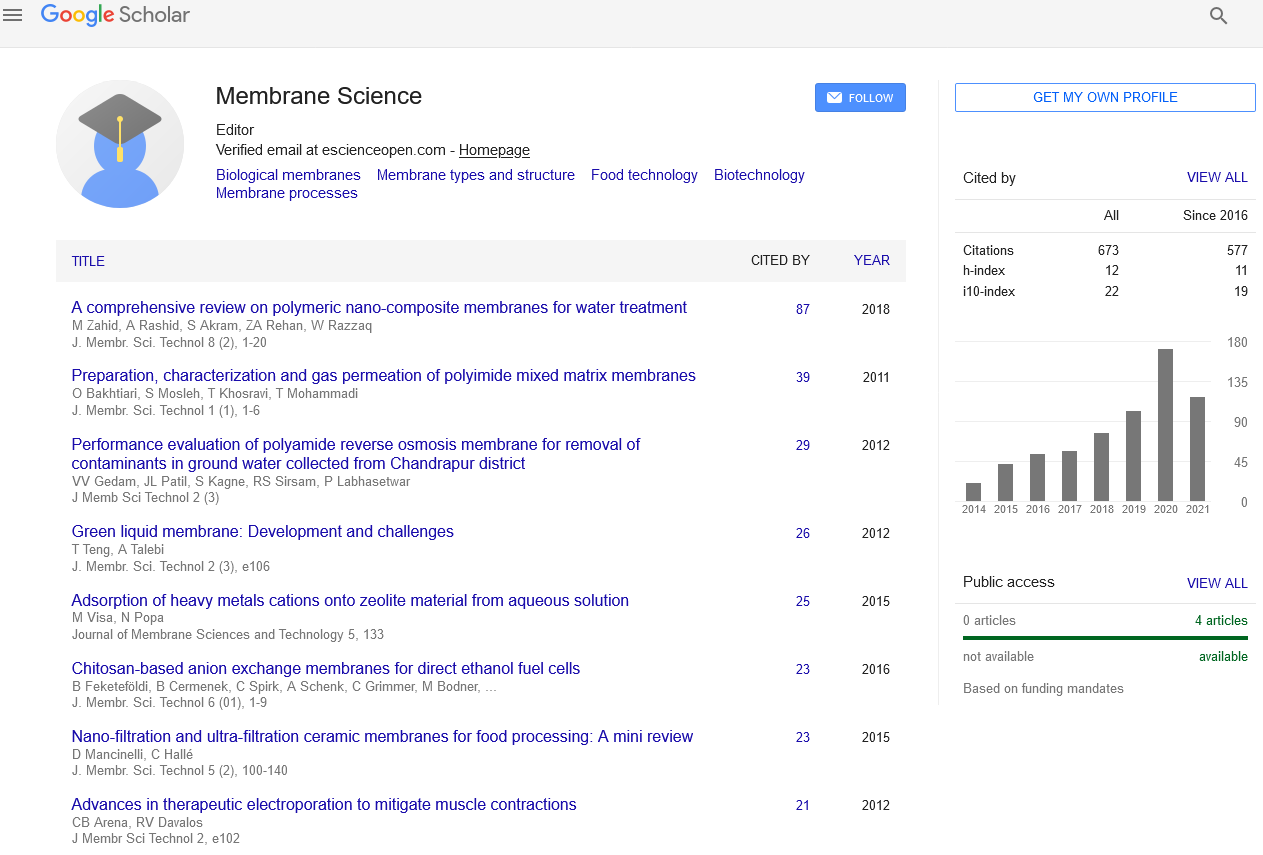Indexed In
- Open J Gate
- Genamics JournalSeek
- Ulrich's Periodicals Directory
- RefSeek
- Directory of Research Journal Indexing (DRJI)
- Hamdard University
- EBSCO A-Z
- OCLC- WorldCat
- Proquest Summons
- Scholarsteer
- Publons
- Geneva Foundation for Medical Education and Research
- Euro Pub
- Google Scholar
Useful Links
Share This Page
Journal Flyer

Open Access Journals
- Agri and Aquaculture
- Biochemistry
- Bioinformatics & Systems Biology
- Business & Management
- Chemistry
- Clinical Sciences
- Engineering
- Food & Nutrition
- General Science
- Genetics & Molecular Biology
- Immunology & Microbiology
- Medical Sciences
- Neuroscience & Psychology
- Nursing & Health Care
- Pharmaceutical Sciences
Abstract
Effect of Different Salts on Mass Transfer Coefficient and Inorganic Fouling of TFC Membranes
Gallab AAS, Ali MEA, Shawky HA and Abdel-Mottaleb MSA
The behavior of reverse osmosis membranes against salts separation from salty water during desalination process depends mainly on ionic size, diffusivity and feed concentration of the solute. Here we studied the mechanism of different solutes transport through a commercial BW-TFC membrane using NaCl, CaCl2, Na2SO4, and MgSO4 as feed solutions at different initial feed concentrations (1000, 2000, 5000, 10000 mg/l) and two applied pressures (two and three folds of each salt osmotic pressure). In addition, the membrane transport parameters were investigated using two groundwater samples as feed solutions. The membrane transport parameters; solute transport parameter (DAM/Kδ) and mass transfer coefficient (k), useful for the prediction of the membrane performance, have been calculated by fitting the graphical method to the experimental results. To investigate effect of inorganic fouling onto the membrane performance, synthetic solutions (single solute) and two groundwater samples (multicomponent solute) have been used. Moreover, the membrane surfaces and their cross-sections were characterized using Scanning Electron Microscope to estimate the deposition and crystalline shape of salts onto the membrane surfaces. According to cross-flow results, it was found that calcium and magnesium salts fouled the membrane more than sodium salts, and the salt rejection percentage were in the order of Na2SO4> NaCl> MgSO4> CaCl2 in case of synthetic solutions and CaSO4>MgSO4>MgCl2>Ca(HCO3)2>NaCl in case of groundwater desalination.


